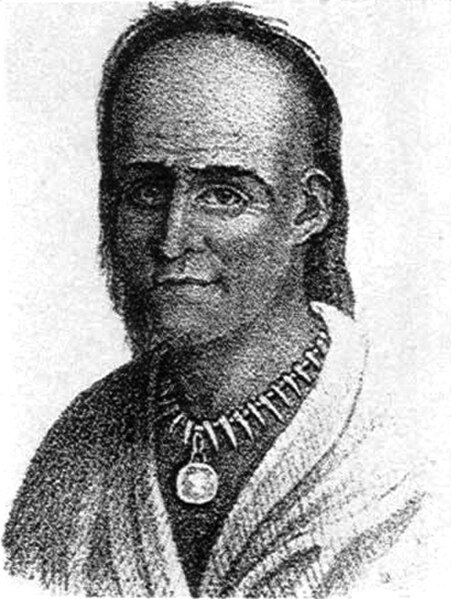William Wells, also known as Apekonit, was the son-in-law of Chief Little Turtle of the Miami. He fought for the Miami in the Northwest Indian War. During the course of that war, he became a United States Army officer, and also served in the War of 1812.
Captain William Wells
A sculpture on Chicago's Michigan Avenue Bridge shows William Wells fighting in the Battle of Fort Dearborn.
Plaque under Michigan Avenue bridge, Chicago
Little Turtle was a Sagamore (chief) of the Miami people, who became one of the most famous Native American military leaders. Historian Wiley Sword calls him "perhaps the most capable Indian leader then in the Northwest Territory," although he later signed several treaties ceding land, which caused him to lose his leader status during the battles which became a prelude to the War of 1812. In the 1790s, Mihšihkinaahkwa led a confederation of native warriors to several major victories against U.S. forces in the Northwest Indian Wars, sometimes called "Little Turtle's War", particularly St. Clair's defeat in 1791, wherein the confederation defeated General Arthur St. Clair, who lost 900 men in the most decisive loss by the U.S. Army against Native American forces.
Lithograph of Little Turtle, reputedly based upon a lost portrait by Gilbert Stuart that was destroyed when the British burned Washington, D.C., in 1814.
Little Turtle
Little Turtle, from U.S. Army Military History Institute
Silhouette of Little Turtle by Robert Wyer







